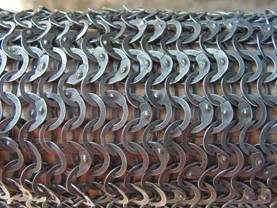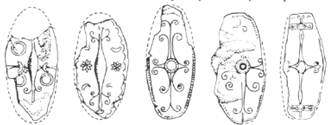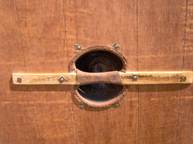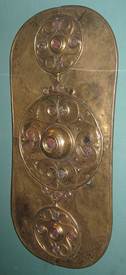

Halstatt / La Tene
La Tene culture is named after the site in Switzerland where it was first discovered (Celtic Culture-Hallstatt and La Tene). This culture flourished and expanded from the West to the East of Europe, in the regions which are today France, Switzerland, Austria, southwest Germany, Czech Republic, Slovakia, Slovenia, Hungary and Romania. Developing from Hallstatt, an earlier European Iron Age culture, it lasted from 450BC to the Roman conquest around 1st century BC (“La Tene”, Wikipedia). When we mentioned La Tene culture, we also usually referred to Celtic people, a group of tribal societies, who also settled in La Tene territories. With their developed metalworking techniques, especially for iron, Celtic people created several armors that were widely adopted by the army of the Roman Empire. People in La Tene culture were also known to Romans as Gauls (Celtic Culture-Hallstatt and La Tene), which explains why some of the armor designs that Romans adopted from this culture had the names such as “Gallic helmet”. Although different names were used, they all referred to those that belonged to La Tene culture. This culture also had active warfare with their neighbor cultures, such as the Gallic Invasion of Greece in 279 BC. Or the Gallic War, from 58 to 51 BC, in which they were conquered by Julius Caesar.
Most notable armors in La Tene culture are attributed to Celtic people. The styles of their armor designs in helmets or cuirasses were popular and many of them were adopted by the army of Roman Empire in later period. Perhaps one of the most remarkable armor designs of the Celts in La Tene era was the creation of mail armor, which still appeared in other parts of the world hundreds of years later.
Materials and Techniques
Materials used in La Tene culture were abundant. La Tene metalworking techniques were improved developments of earlier methods, especially iron forging. The blacksmith’s forge had produced a wide range of products and nurtured all the secrets and skills in alloy mixing. Another technique used by Celtics was casting by the cire perdue (lost wax) method, which is known in modern methodology as investment casting, and the beating of metal into sheets. Other techniques such as hammering were also used to form the metal pieces. They also mastered decoration techniques such as repousse, scratching, scribing and chiseling.
HELMET |
|
|
Name: East Celtic Bronze helmet Origin: La Tene Celtic culture from 3rd to 2nd century BC. Material: bronze. The helmet was basically made in several assembled soldered and riveted parts. As can be seen from the above picture, the hemisphere bowl was made from 2 soldered halves. Also above the forehead two bold arched extruded reinforcing ridges, the avantail embracing the neck almost to the ears and attached by a row of very small rivets. This helmet is 34cm high, and weighs 813g. Celtic helmets were widely adopted by Roman legions into their famous Imperial-Gallic type helmet. |
|
CUIRASS |
|
|
Name: Mail armor. Origin: La Tene Celtic culture, around 400BC. Materials: metals, usually iron. The chain mail is made by linking metal rings together so that they will create a protective layer that the warrior can wear like his cloths. In ancient time, there were already various patterns to link the rings, but the most common one was the 4 to 1 pattern, which links each ring with 4 others. The armor is made from interlocking one iron ring with four others. The simplest method of construction is to have alternative rows of punched out rings from sheet metal interlocked with wire rings which are either butted or riveted. The Roman adopted this Celtic armor to build their Lorica Hamata, which was basically also a mail armor. |
|
SHIELDS |
|
|
Name: Celtic shield. Origin: La Tene Celtic culture. Materials: wood or other organic material, reinforced with metals. Different from the Greek circular shields, the Celts preferred to use long, flat shields, which can have rectangular or oval shapes (above picture), with a protruding central section to provide more space for handling (below picture). This long shield enabled the soldier to put it on the ground and stand behind it for protection. This type of long shield was also adopted by the Roman army with a little modification. |
|
|
Name: Battersea shield. Origin: La Tene Celtic culure, discovered in London, dated back to 350BC or later. Materials: bronze and wood. This is actually a “votive offering” piece of armor and not for battle use, but it can still serve to illustrate the style of armors designs used by La Tene Celtic people because it is a Celtic shield decorated in La Tene style. The decoration was made by repousse technique with enamel. The bronze plate shown in the picture was originally fixed on a wooden shield behind it, which no longer exists because of degradation. |
|


Integrative Materials Design Center - Worcester Polytechnic Institute




